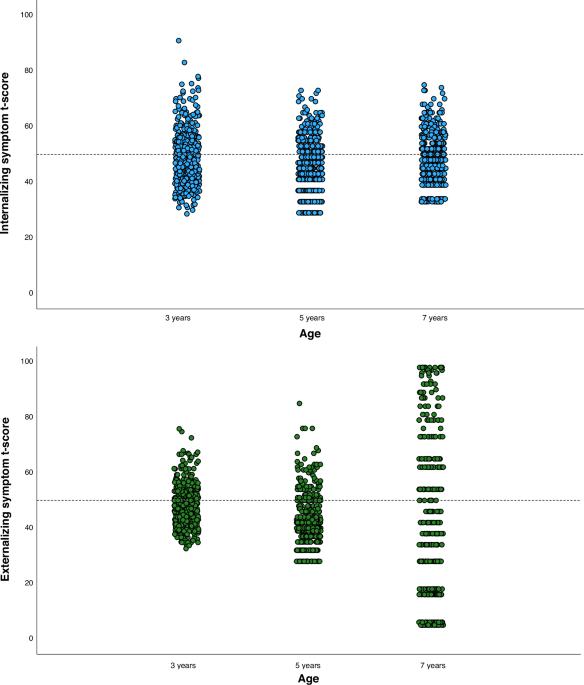Stress timing, trauma exposure, and family resilience differentially affect internalizing and externalizing symptoms at 3, 5, and 7 years of age
引用次数: 0
Abstract
Mental health disorders are associated with decreased quality of life, economic productivity loss, and increased mortality. The association between stressful experiences and psychopathology is well documented. However, studies are needed to understand the impact of timing of stressful events, types of traumatic experiences, and of family resilience on internalizing and externalizing symptoms in early childhood. The present study used a longitudinal design towards this end. Parents (N = 456) completed study measures at infancy, 2 years, 3 years, 5 years, and 7 years. At 3 years, greater stressful events during the prenatal period, 1-2 years, and 2-3 years (B = 0.833–0.369, p = 0.028–0.046) predicted internalizing symptoms for female participants only. For externalizing symptoms at 3 years, every time point assessed was significantly associated with more symptoms across both sexes (B = 1.071–0.414, p < 0.001). At 5 years, both internalizing and externalizing symptoms were associated with a greater number of stressful events at every time point and across sexes (B = 1.372–0.465, p < 0.001–0.002). There was evidence for timing effects, including cumulative effects, sensitive periods, and recency effects. Exposure to interpersonal trauma associated with greater internalizing symptoms (B = 2.120, p = 0.002), whereas both interpersonal (B = 1.879, p = 0.005) and non-interpersonal (B = 1.223, p = 0.032) traumatic experiences were associated with greater externalizing symptoms. Aspects of family resilience including higher levels of family commitment, ability to face challenges, and sense of control reduced risk for internalizing symptoms (B = –0.496, p = 0.004) while only greater sense of control (B = –0.838, p = 0.040) reduced risk for externalizing symptoms at age 7 years, including in the context of trauma. Across the first 7 years of life, greater exposure to stressful events predicted higher internalizing and externalizing symptoms for children. This pattern varied with sex. Higher family resilience in terms of commitment, ability to face challenges, and control provided some protection.

压力时间、创伤暴露和家庭复原力会对 3、5 和 7 岁时的内化和外化症状产生不同影响。
精神疾病与生活质量下降、经济生产力损失和死亡率上升有关。压力经历与精神病理学之间的关联已被充分证明。然而,要了解压力事件发生的时间、创伤经历的类型以及家庭复原力对幼儿期内化和外化症状的影响,还需要进行研究。本研究为此采用了纵向设计。家长(N = 456)分别在婴儿期、2 岁、3 岁、5 岁和 7 岁时完成了研究测量。在 3 岁时,产前、1-2 岁和 2-3 岁期间发生的较大压力事件(B = 0.833-0.369, p = 0.028-0.046)可预测女性参与者的内化症状。至于 3 岁时的外化症状,评估的每个时间点都与男女参与者的更多症状显著相关(B = 1.071-0.414,p = 0.028-0.046)。
本文章由计算机程序翻译,如有差异,请以英文原文为准。
求助全文
约1分钟内获得全文
求助全文

 求助内容:
求助内容: 应助结果提醒方式:
应助结果提醒方式:


